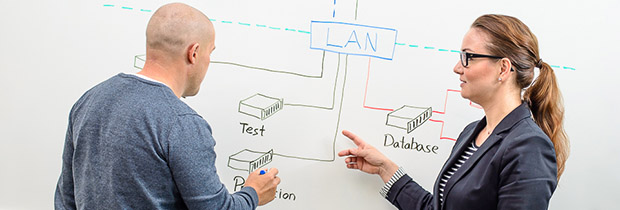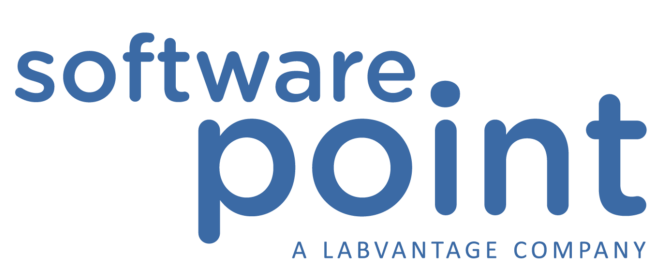7. Sep 2015 | Tags: Cost of LIMS

Guest posting – published with the permission of Siri H. Segalstad
COST OF LIMS – Part 1 of 3
Advocates for building a new LIMS themselves usually state that their lab is so unique they cannot use a commercial LIMS. However, very few labs are truly unique — it is actually their products that are unique. Labs, in general, work the same way:
- They obtain a sample from somewhere. The sample may be external or internal. The latter includes, for example, raw material, R&D, production or study. This sample then may be split into several samples to be analyzed.
- Analyses are done in various labs based on sites, laboratory type, or projects / products. Analytical methods may be manual or instrumental, and the manual ones may include what the sample looks or smells like. The instrumental methods may be virtually everything else that uses one or more instruments to obtain results.
- The result is often compared to specifications to see that the sample conforms. A manager approves or authorizes the results before the results are reported, often on a Certificate of Analysis (CoA).
In reality, the only things that are unique are that every lab has their own types of sample, sets of instruments, analytical methods, and specifications; each of which can easily be implemented into a commercial LIMS.
Additionally there are two main types of production: Batch production where you produce you products in discrete batches; and continuous production, like oil refineries where the products may even defined only after the production has been done to see when they conform to specifications for the various products. Most labs working in a batch environment, usually also have their own continuous production of purified water, and time-based bacterial or cleaning-in-place check. While some LIMS systems may be better at one type of production than for the other, most will handle all types equally well.
Time and flexibility
Advocates of homemade LIMS also say that they can build a LIMS in a few months in an Oracle, Access or SQL database. Of course, this will be completely tailored to their needs and will be much cheaper than a commercial system. Let’s discuss these statements:
- It may be possible to build LIMS in a few months. However, this requires that there is a very, very good user requirements specification that covers everything the lab ever does — and will do in the future. Few are able to write such a specification, especially to include how they will work in the future. So, risks are very high that a home-made LIMS will not be flexible enough to allow for future changes.
- There is a good chance that programming a build-it-yourself LIMS actually will take a lot longer than a few months. By then, the users will likely have found many more things that should be included in the system, and these requirements will be added. We get what is generally called scope creep, and the result is inevitably that the project takes longer than anticipated. Bear in mind that a commercial LIMS includes several decenniums, or even centennials, of man-working days in its planning, programming and testing.
- If a programmer is brought in to build the LIMS, he will probably not know enough about laboratories to even ask the right questions when he is in doubt. On the other hand, if using a laboratory person, he will probably not know enough about programming to do a good job. And, unless either of these is very skilled in quality assurance, chances are that they will program without creating enough documentation, such as requirements specification, other specifications and plans, test plans, testing, reports, etcetera.
In any case, the lab would definitely have GAMP (ref 1) Category 5 software. This means extensive validation, which will cost a lot more than a purchased Category 4 software. A homemade system will be frowned upon and scrutinized by the U.S. Food & Drug Administration (FDA) and European authorities — and probably not pass the inspection. Back to square one.
Very few companies build in-house systems these days. However, a few old systems are still in use. Regulators for e.g. the pharmaceutical industry scrutinize these systems, and find everything wrong with them. The question is whether the company is a pharmaceutical company or a software developer. Some companies have received severe ‘Warning Letters’ from the FDA (ref 2) for their innovative programming and lack of system maintenance.
Conclusion – “Kill the build-it-yourself thought immediately”
So you see, it simply does not make sense to create your own LIMS. Even if your IT people would love to create it for you “in only a few months”, don’t believe them. History has shown that, regardless of the amount of time spent programming an in-house system, it is never as good and as flexible as buying a commercial LIMS. In addition, in-house projects are very likely to suffer delays, and will invariably be more expensive than expected. It is better to spend your money on a commercial system and get what you need, instead of spending on a programmer from whom, if you are lucky, you will get some of the functionality you need, but not the flexibility, and at a much later time than expected. Chances are that, when you finally get the homegrown system, your needs will have changed, too, and the system is no longer what you want.
For all of the reasons cited above, I recommend that you kill the build-it-yourself thought immediately. You are not going to get a 100-percent system even if you build it yourself. So, you may just as well make do with a 90- to 95-percent system purchased from a commercial supplier. The LIMS suppliers have been in the business for a long time, and the LIMS systems are now mature, well understood, and not the least: very flexible to fit all labs.
Read more about the cost of LIMS in part 2!
Writer:

Siri H. Segalstad – Segalstad Consulting AS

